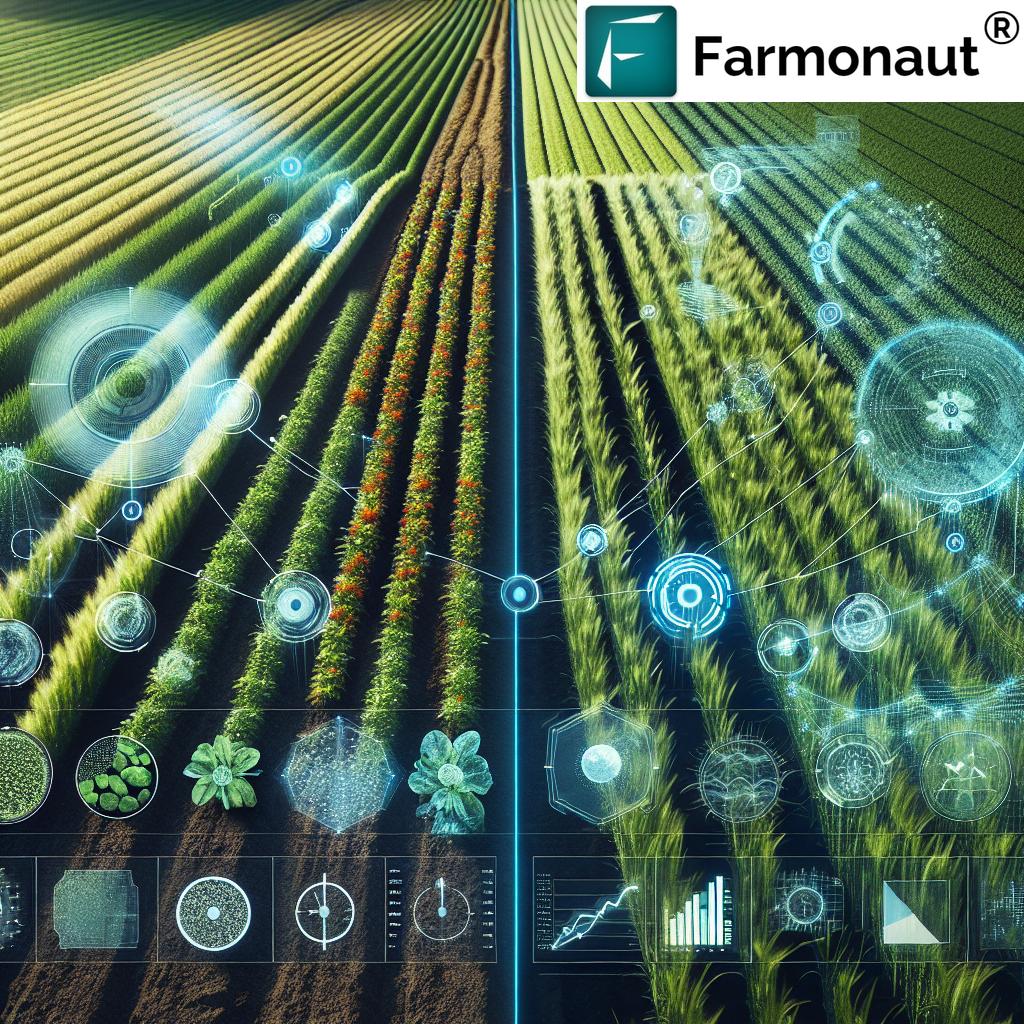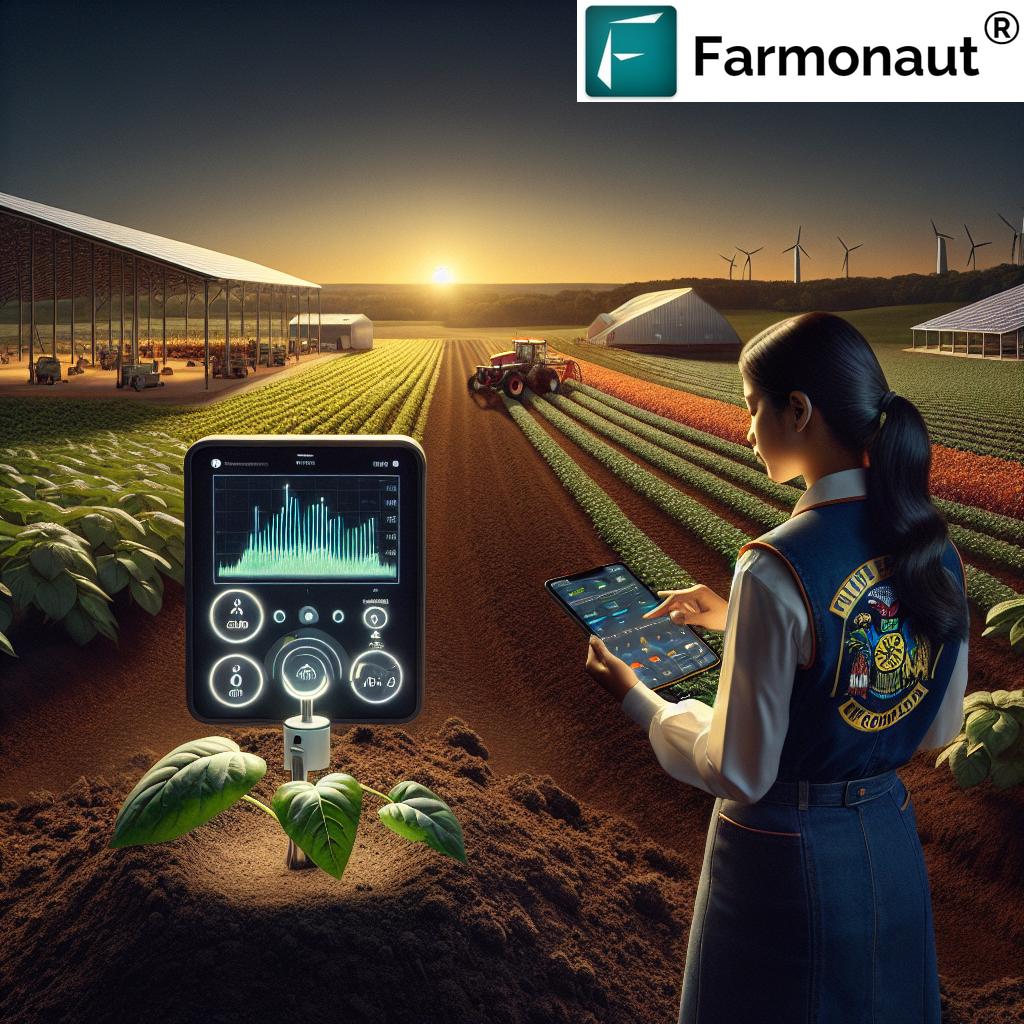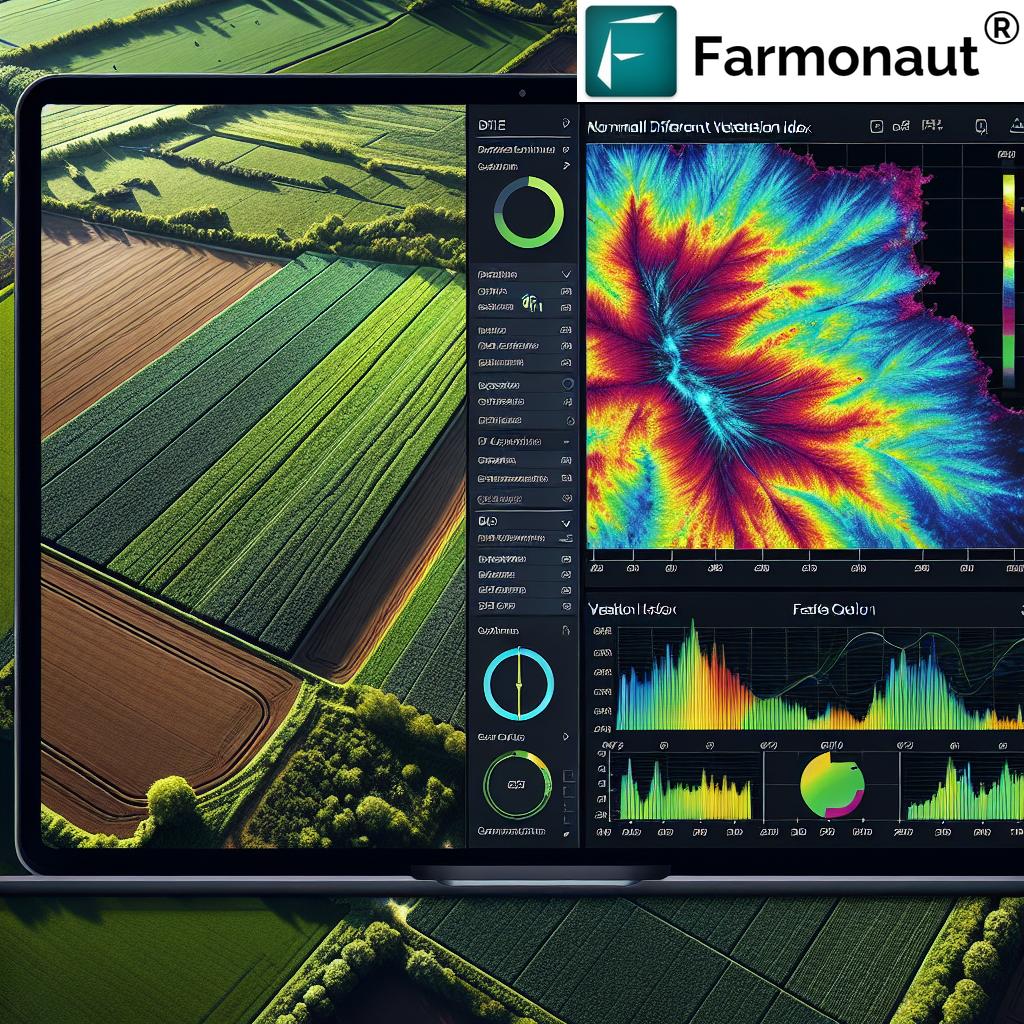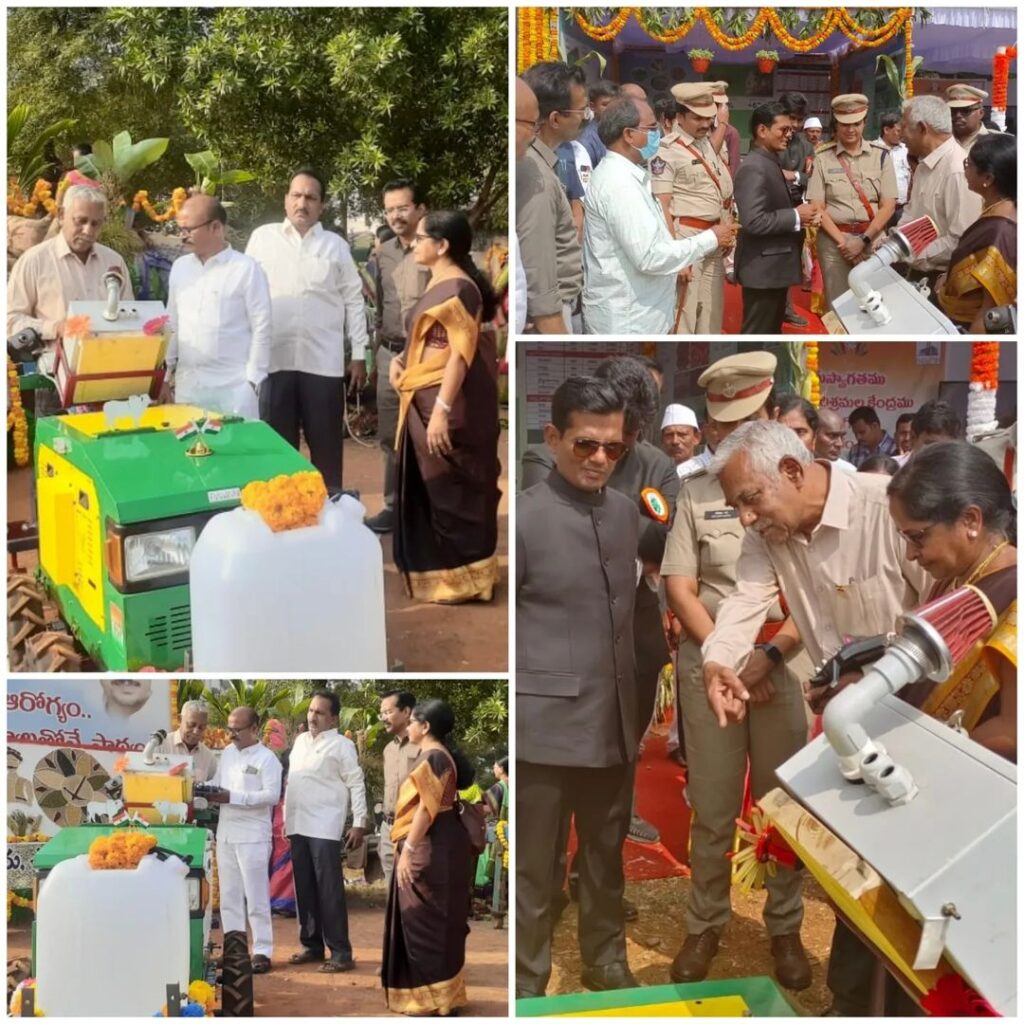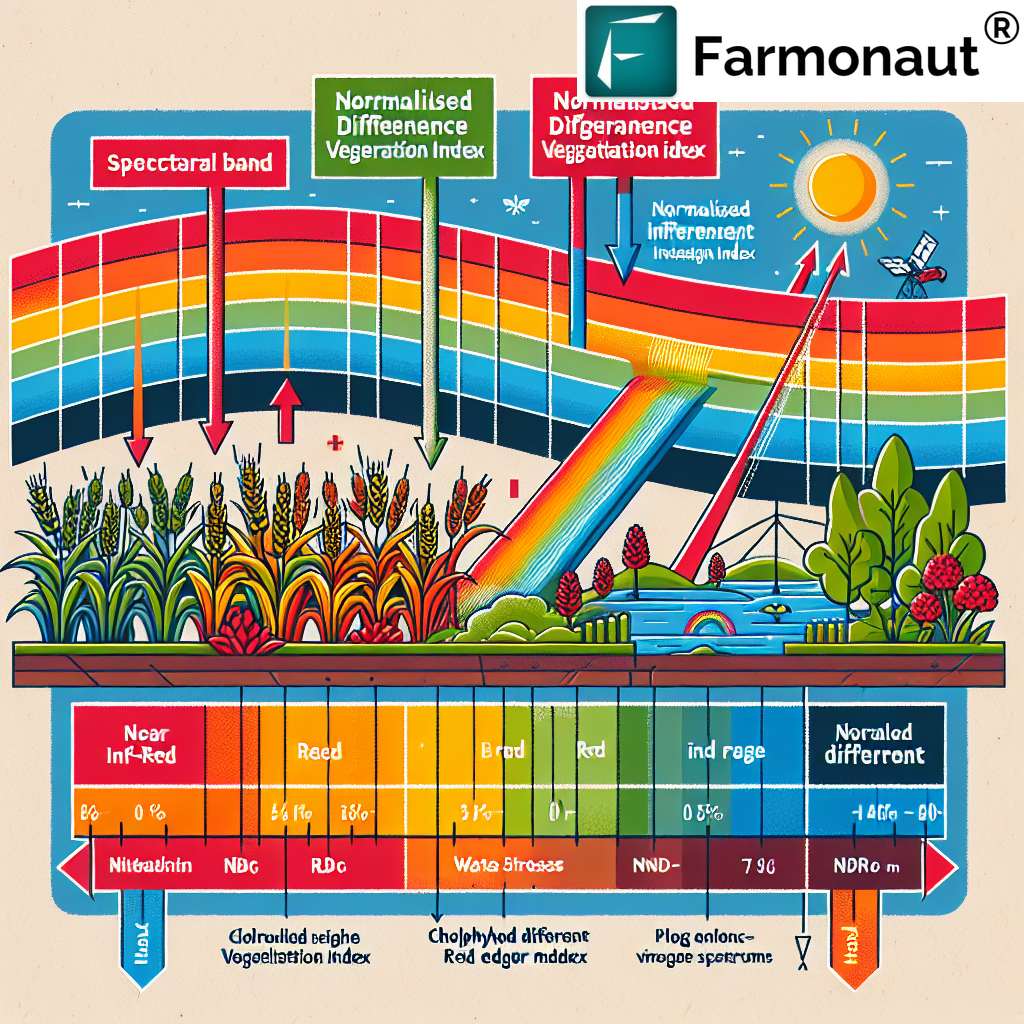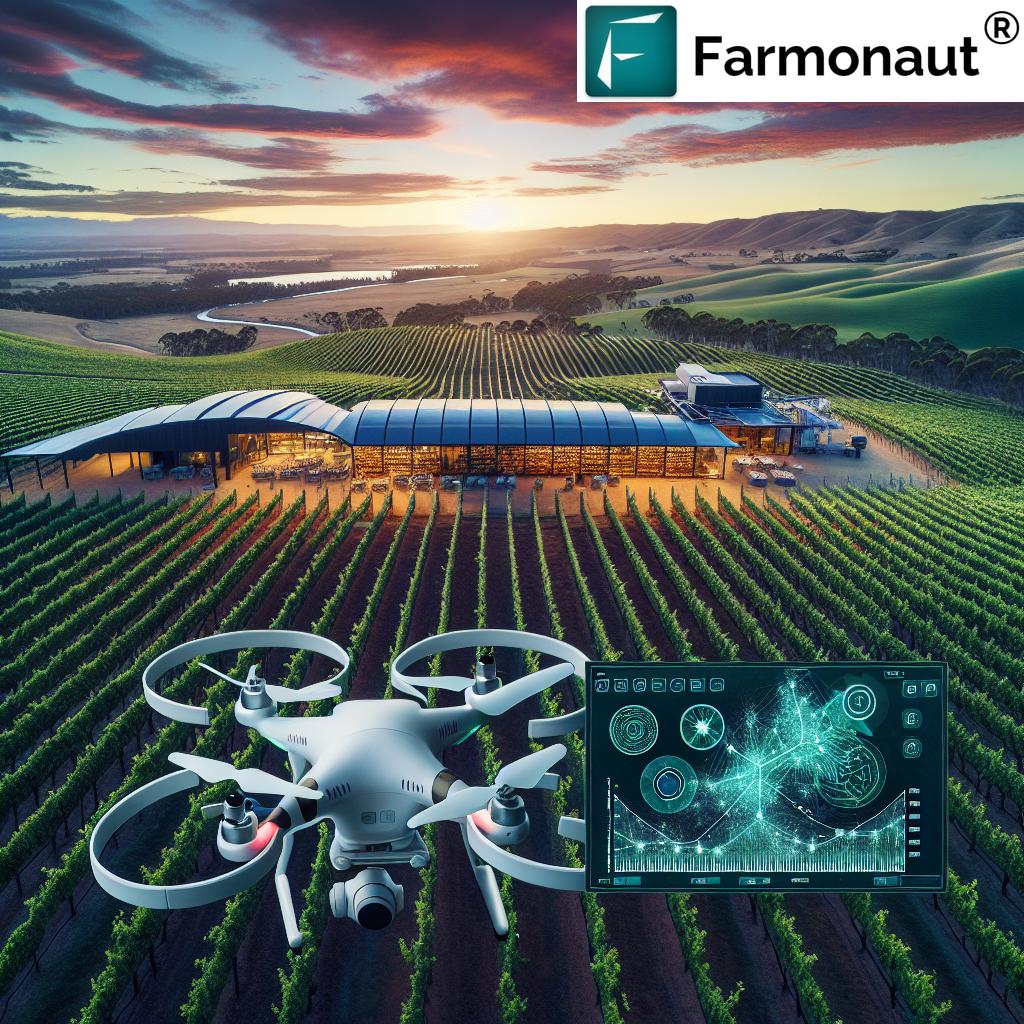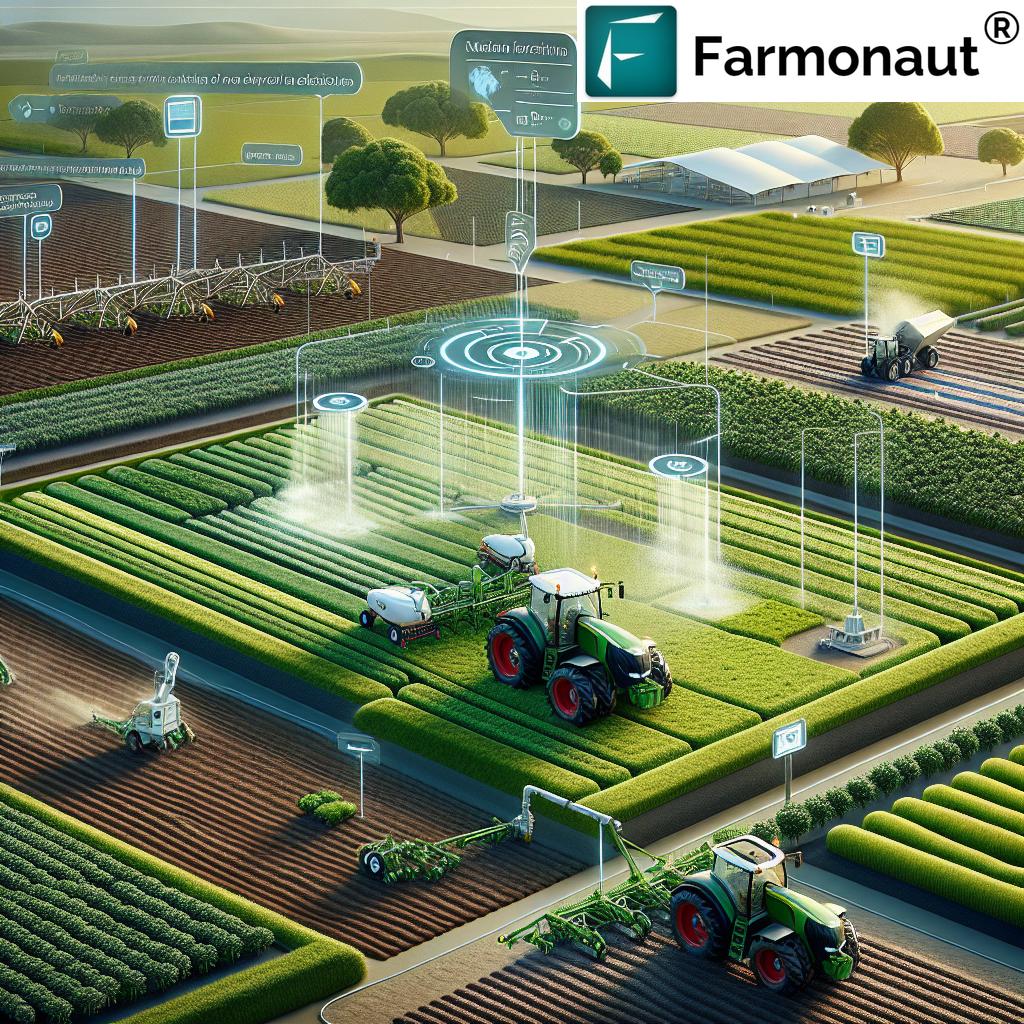Optimizing Farm Yields: Leveraging Soil Health, Digital Tools, and Sustainable Practices for Smarter Agriculture

In the ever-evolving world of agriculture, we find ourselves at a pivotal moment where traditional farming practices are being revolutionized by cutting-edge technology and a renewed focus on soil health. As we navigate this exciting landscape, it’s crucial to understand how these advancements are reshaping the way we approach farming, from the ground up. In this comprehensive guide, we’ll explore the intricate relationship between soil health, digital farming tools, and sustainable practices that are driving the future of agriculture.
The Soil Health Mindset: A Foundation for Success
At the heart of any successful farming operation lies the health of its soil. Adopting a soil health mindset is not just a trend; it’s a fundamental shift in how we approach agriculture. This perspective recognizes that soil is not merely a medium for plant growth but a complex, living ecosystem that plays a crucial role in crop productivity, environmental sustainability, and long-term farm viability.
Understanding the Soil Health Spectrum
The soil health spectrum is a concept that helps us visualize the continuum of soil conditions, ranging from degraded to optimal. Key factors that influence a soil’s position on this spectrum include:
- Organic Matter Content: Higher levels of organic matter improve soil structure, water retention, and nutrient availability.
- Microbial Diversity: A rich and diverse microbial population contributes to nutrient cycling and plant health.
- Soil Structure: Well-structured soil allows for better root penetration, water infiltration, and gas exchange.
- Nutrient Balance: Optimal levels of essential nutrients support plant growth without causing environmental harm.
By understanding where our soils fall on this spectrum, we can make informed decisions about management practices to improve and maintain soil health.
The Economics of Soil Health Management
Investing in soil health is not just an environmental imperative; it’s a sound economic decision. While the initial costs of implementing soil health practices may seem daunting, the long-term benefits far outweigh the expenses. Consider the following economic advantages:
- Reduced Input Costs: Healthy soils require fewer inputs of fertilizers and pesticides, leading to significant cost savings over time.
- Improved Yield Stability: Soils with better structure and water-holding capacity are more resilient to weather extremes, providing more consistent yields.
- Enhanced Crop Quality: Nutrient-dense soils produce higher-quality crops that may command premium prices in the market.
- Increased Land Value: Farms with a history of good soil management practices often have higher property values.
The return on investment (ROI) for soil health practices can be substantial, though it may take several years to fully realize. Farmers who adopt a long-term perspective on soil health management often find that their patience pays off in improved profitability and sustainability.
Digital Farming: Harnessing Technology for Precision Agriculture
As we embrace the soil health mindset, we’re also witnessing a digital revolution in agriculture. Digital farming tools are transforming how we monitor, analyze, and manage our fields, enabling unprecedented levels of precision and efficiency.
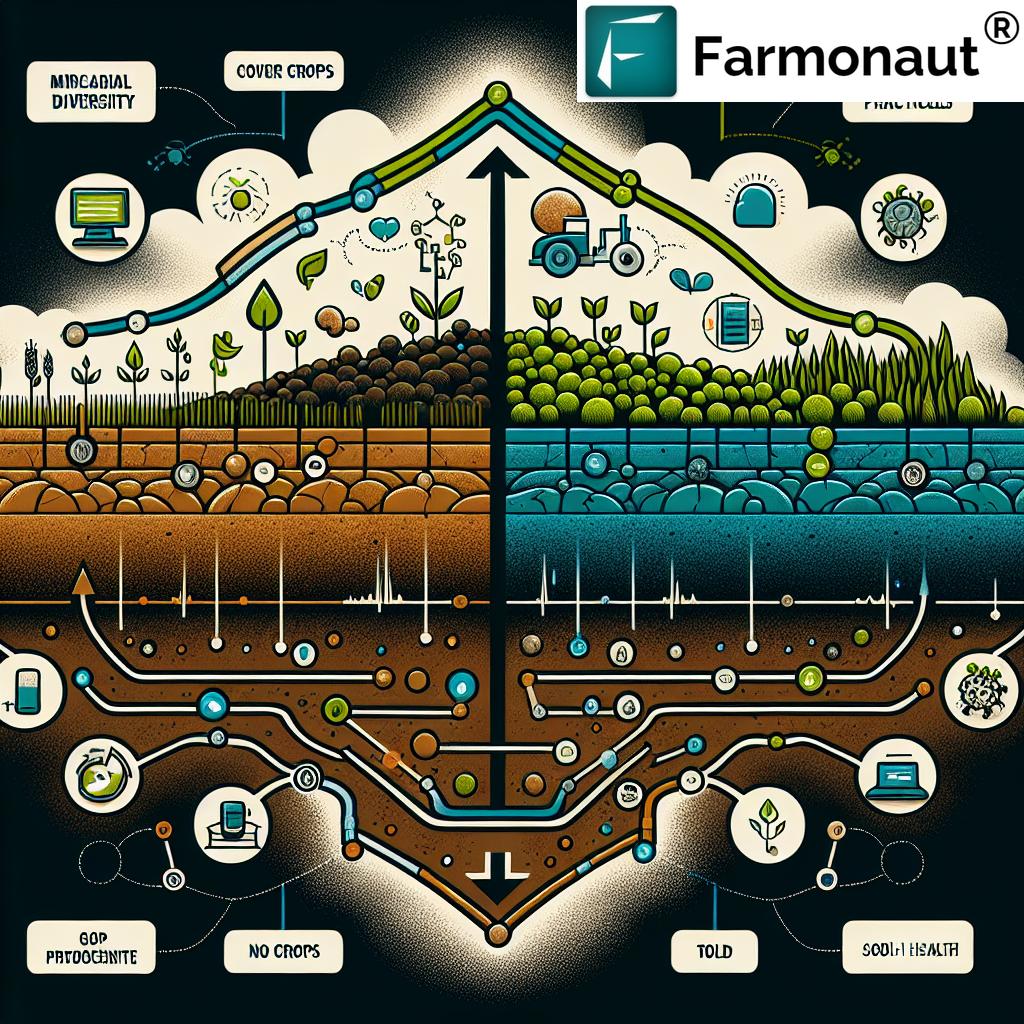
Satellite Imagery and Remote Sensing
One of the most powerful tools in the digital farming arsenal is satellite imagery. Companies like Farmonaut are leveraging advanced satellite technology to provide farmers with detailed insights into their fields. These services offer:
- Crop Health Monitoring: Regular updates on vegetation indices like NDVI (Normalized Difference Vegetation Index) allow farmers to track crop health throughout the growing season.
- Soil Moisture Analysis: Satellite-derived soil moisture data helps optimize irrigation schedules and prevent water stress.
- Yield Prediction: By analyzing historical and current data, satellite imagery can provide yield forecasts, helping farmers plan harvests and marketing strategies.
To explore how satellite imagery can benefit your farm, visit Farmonaut’s app for a hands-on experience.
Data-Driven Decision Making
The abundance of data generated by digital farming tools can be overwhelming, but when properly analyzed, it becomes a powerful asset for decision-making. Here’s how farmers are leveraging data:
- Field Variability Mapping: By collecting and analyzing data on soil properties, topography, and crop performance, farmers can create detailed maps that highlight variability within fields.
- Variable Rate Applications: Armed with field variability data, farmers can implement variable rate technology for precise application of inputs like fertilizers, seeds, and pesticides.
- Predictive Analytics: Advanced algorithms can analyze historical and real-time data to predict pest outbreaks, disease risks, and optimal planting dates.
For developers interested in integrating these data-driven insights into their own applications, Farmonaut offers a comprehensive API with documentation available here.
Mobile Applications and Farm Management Software
The proliferation of smartphones has put powerful farm management tools in the pockets of farmers worldwide. Mobile apps provide:
- Real-time Field Monitoring: Access to up-to-date information on crop health, weather conditions, and soil moisture from anywhere.
- Task Management: Digital to-do lists and scheduling tools help streamline farm operations and improve labor efficiency.
- Record Keeping: Easy-to-use interfaces for logging field activities, input applications, and yield data.
Farmonaut’s mobile app is available for both Android and iOS devices, offering a comprehensive suite of digital farming tools.
Sustainable Practices for Long-Term Farm Health
While digital tools provide valuable insights, it’s the implementation of sustainable practices that truly transforms farm health and productivity. Let’s explore some key strategies that align with both soil health and digital farming principles.
Cover Crops: The Unsung Heroes of Soil Health
Cover crops are plants grown primarily for the benefit of the soil rather than for harvest. They play a crucial role in maintaining soil health by:
- Preventing Erosion: Cover crop roots hold soil in place, reducing loss from wind and water erosion.
- Improving Soil Structure: Root systems create channels for water infiltration and aeration.
- Enhancing Nutrient Cycling: Cover crops can capture and store nutrients, releasing them for subsequent crops.
- Increasing Organic Matter: As cover crops decompose, they add valuable organic material to the soil.
Digital farming tools can help optimize cover crop management by providing data on biomass accumulation, nitrogen fixation rates, and optimal termination timing.
No-Till and Reduced Tillage Systems
Transitioning to no-till or reduced tillage practices can have profound effects on soil health and farm economics. Benefits include:
- Improved Soil Structure: Minimizing soil disturbance allows natural processes to build soil aggregates and improve structure.
- Increased Water Infiltration: Better soil structure leads to improved water absorption and retention.
- Reduced Erosion: Keeping crop residues on the surface protects soil from erosive forces.
- Lower Fuel and Labor Costs: Fewer tillage passes mean reduced equipment use and labor requirements.
Satellite imagery and soil moisture sensors can be particularly helpful in managing no-till systems, providing insights into residue cover and soil conditions.
Precision Nutrient Management
Optimizing fertilizer use is crucial for both economic and environmental reasons. Digital farming tools enable precision nutrient management through:
- Soil Testing and Mapping: Detailed soil analysis helps create nutrient management zones within fields.
- Variable Rate Application: Fertilizer can be applied at varying rates across the field based on soil test results and crop needs.
- In-Season Monitoring: Satellite imagery and other sensors can detect nutrient deficiencies, allowing for timely corrections.
By matching nutrient applications to crop needs and soil conditions, farmers can reduce input costs, minimize environmental impact, and optimize yields.
Integrating Soil Health and Digital Farming: A Holistic Approach
The true power of modern agriculture lies in the integration of soil health principles with digital farming technologies. This holistic approach allows farmers to make data-driven decisions that support both short-term productivity and long-term sustainability.
The Role of Biological Diversity
Fostering biological diversity in agricultural systems is a key component of soil health management. This includes:
- Crop Rotation: Diversifying crop sequences to break pest cycles and improve soil health.
- Intercropping: Growing multiple crops in close proximity to enhance resource use efficiency.
- Beneficial Insect Habitats: Maintaining areas for pollinators and natural predators of crop pests.
Digital tools can help plan and monitor these diverse systems, tracking the impacts on soil health, pest pressure, and overall farm productivity.
Managing for Microbial Health
The soil microbiome plays a crucial role in nutrient cycling, disease suppression, and overall soil function. To support a healthy soil microbiome:
- Minimize Disturbance: Reduce tillage and chemical inputs that can disrupt microbial communities.
- Provide Food Sources: Maintain living roots in the soil through cover cropping and diverse rotations.
- Monitor Soil Conditions: Use sensors to track soil moisture and temperature, which affect microbial activity.
Advanced soil testing services, often integrated with digital platforms, can provide detailed analysis of microbial populations and activity.
Adaptive Management Strategies
The combination of real-time data from digital tools and a deep understanding of soil health principles allows for adaptive management strategies. This approach involves:
- Continuous Monitoring: Regularly assessing soil conditions, crop health, and environmental factors.
- Flexible Decision-Making: Adjusting management practices based on current conditions and forecasts.
- Iterative Learning: Using data from each season to refine strategies for the next.
By embracing adaptive management, farmers can respond quickly to changing conditions and optimize their practices for both short-term productivity and long-term sustainability.
Overcoming Challenges in Implementing Soil Health and Digital Farming Practices
While the benefits of integrating soil health principles with digital farming technologies are clear, farmers often face challenges in implementation. Let’s explore some common obstacles and strategies to overcome them.
Initial Investment Costs
One of the primary barriers to adopting new practices and technologies is the upfront cost. To address this:
- Start Small: Begin with pilot projects on a portion of the farm to test new practices and technologies.
- Seek Financial Assistance: Explore government programs, grants, or cooperative initiatives that support sustainable agriculture practices.
- Consider Long-Term ROI: Evaluate investments based on their potential long-term returns, not just short-term costs.
Technical Knowledge and Skills
The complexity of digital tools and soil health management can be intimidating. To build the necessary skills:
- Attend Workshops and Training: Participate in educational programs offered by extension services, technology providers, and soil health organizations.
- Join Farmer Networks: Connect with other farmers who are implementing similar practices to share knowledge and experiences.
- Utilize Online Resources: Take advantage of webinars, online courses, and digital learning platforms focused on agricultural technologies and soil health.
Data Management and Interpretation
The volume of data generated by digital farming tools can be overwhelming. To effectively manage and use this data:
- Invest in Data Management Systems: Choose platforms that integrate various data sources and provide user-friendly interfaces.
- Work with Agronomists: Partner with professionals who can help interpret data and translate it into actionable recommendations.
- Focus on Key Metrics: Identify the most important indicators for your operation and prioritize those in your data analysis.
Balancing Short-Term Needs with Long-Term Goals
The pressure to maintain short-term profitability can sometimes conflict with long-term soil health goals. To strike a balance:
- Set Realistic Timelines: Understand that some soil health improvements may take years to manifest fully.
- Track Progress Systematically: Use digital tools to monitor incremental changes in soil health and productivity over time.
- Communicate with Stakeholders: Educate landowners, investors, and other stakeholders about the long-term benefits of soil health investments.
Case Studies: Success Stories in Integrated Soil Health and Digital Farming
While we can’t provide specific case studies, it’s important to note that farmers around the world are successfully integrating soil health practices with digital farming technologies. These success stories often share common themes:
- Incremental Adoption: Many farmers start with small-scale trials of new practices or technologies before scaling up.
- Customized Approaches: Successful farmers adapt general principles to their specific local conditions and farm goals.
- Continuous Learning: A commitment to ongoing education and adaptation is key to long-term success.
- Collaboration: Working with researchers, extension agents, and other farmers often accelerates progress and innovation.
The Future of Farming: Integrating Soil Health, Digital Tools, and Sustainable Practices
As we look to the future of agriculture, it’s clear that the integration of soil health principles, digital farming technologies, and sustainable practices will play a crucial role in meeting global food production needs while preserving our natural resources. Here are some trends and developments to watch:
Advanced Sensing Technologies
The next generation of soil and crop sensors promises even more detailed and real-time data:
- In-Situ Soil Sensors: Continuous monitoring of soil moisture, nutrients, and microbial activity.
- Hyperspectral Imaging: More detailed crop health analysis from satellite and drone platforms.
- IoT Integration: Networks of connected sensors providing comprehensive field-level data.
Artificial Intelligence and Machine Learning
As datasets grow, AI and machine learning algorithms will become increasingly powerful tools for farm management:
- Predictive Modeling: More accurate forecasts of yield, pest pressure, and weather impacts.
- Automated Decision Support: AI-driven recommendations for planting, fertilization, and pest management.
- Pattern Recognition: Identifying complex relationships between soil health, management practices, and crop performance.
Regenerative Agriculture at Scale
The principles of regenerative agriculture, which focus on restoring soil health and ecosystem function, are gaining traction:
- Carbon Sequestration: Increasing emphasis on farming practices that capture and store atmospheric carbon in soils.
- Ecosystem Services Markets: Development of markets that compensate farmers for environmental benefits provided by sustainable practices.
- Integrated Crop-Livestock Systems: Renewed interest in diversified farming systems that mimic natural ecosystems.
Precision Conservation
Digital tools are enabling more targeted and effective conservation practices:
- Site-Specific Buffer Strips: Using high-resolution topography and water flow data to optimize placement of conservation buffers.
- Precision Wetland Restoration: Identifying and restoring critical wetland areas within agricultural landscapes.
- Dynamic Conservation Planning: Adapting conservation practices in real-time based on changing environmental conditions.
Comparison: Traditional Farming vs. Farmonaut-Enabled Farming
| Aspect | Traditional Farming | Farmonaut-Enabled Farming |
|---|---|---|
| Soil Health Monitoring | Periodic soil testing, visual inspection | Continuous satellite-based monitoring, AI-driven analysis |
| Climate Data Analysis | Local weather reports, historical knowledge | Precise, field-level weather data and forecasts |
| Crop Management | Uniform application of inputs, calendar-based decisions | Variable rate applications, data-driven timing of operations |
| Fertilizer Optimization | Blanket recommendations, experience-based application | Precision nutrient management, real-time deficiency detection |
| Yield Prediction | Historical averages, manual field scouting | AI-powered yield forecasts, satellite-based crop health assessment |
| Decision-Making Tools | Intuition, basic record-keeping | Advanced analytics, AI advisory systems, mobile apps |
Conclusion: Embracing a New Era of Agriculture
As we’ve explored throughout this comprehensive guide, the future of agriculture lies at the intersection of soil health, digital innovation, and sustainable practices. By adopting a soil health mindset, leveraging powerful digital tools, and implementing proven sustainable practices, farmers can not only improve their productivity and profitability but also contribute to the long-term health of our planet.
The journey toward integrated, sustainable farming is not without its challenges, but the potential rewards—both economic and environmental—are immense. As technology continues to evolve and our understanding of soil ecosystems deepens, we can look forward to even more exciting developments in the field of agriculture.
For those ready to take the next step in their farming journey, Farmonaut offers a suite of tools designed to support this integrated approach to agriculture. From satellite-based crop monitoring to AI-powered advisory services, Farmonaut is committed to making advanced agricultural technologies accessible to farmers of all scales.
To explore how Farmonaut can support your farm’s transition to a more data-driven, soil-health-focused operation, consider subscribing to our services:
By embracing these innovative approaches and tools, we can work together to create a more resilient, productive, and sustainable agricultural system for generations to come.
Frequently Asked Questions (FAQ)
-
Q: What is the soil health mindset?
A: The soil health mindset is an approach to farming that views soil as a living ecosystem rather than just a growth medium. It emphasizes practices that promote biological activity, improve soil structure, and enhance nutrient cycling to create a more sustainable and productive agricultural system. -
Q: How do digital farming tools contribute to soil health management?
A: Digital farming tools, such as satellite imagery and soil sensors, provide detailed data on soil conditions, crop health, and field variability. This information allows farmers to make more precise decisions about input application, irrigation, and other management practices, which can help maintain and improve soil health while optimizing productivity. -
Q: What are some key sustainable practices for improving soil health?
A: Key sustainable practices include implementing cover crops, reducing tillage, practicing crop rotation, managing for increased biological diversity, and optimizing nutrient management through precision agriculture techniques. -
Q: How long does it take to see improvements in soil health?
A: The timeline for soil health improvements can vary depending on initial soil conditions and the practices implemented. Some changes, like increased water infiltration, may be noticeable within the first year. However, significant improvements in soil organic matter and overall soil function may take several years to fully manifest. -
Q: Can small-scale farmers benefit from digital farming technologies?
A: Yes, many digital farming technologies are scalable and can benefit farms of all sizes. Platforms like Farmonaut offer affordable solutions that allow small-scale farmers to access satellite imagery, weather data, and other digital tools to improve their farm management practices. -
Q: How does improving soil health impact farm economics?
A: Improving soil health can lead to numerous economic benefits, including reduced input costs, improved yield stability, enhanced crop quality, and increased resilience to environmental stresses. While some practices may require initial investments, the long-term economic benefits often outweigh the costs. -
Q: What role does microbial diversity play in soil health?
A: Microbial diversity is crucial for soil health as it supports nutrient cycling, improves soil structure, enhances water retention, and can even suppress plant diseases. A diverse soil microbiome contributes to overall soil fertility and resilience. -
Q: How can farmers integrate soil health practices with digital farming technologies?
A: Farmers can use digital tools to monitor the impacts of soil health practices, such as tracking changes in vegetation indices after implementing cover crops. They can also use precision agriculture technologies to optimize the application of inputs in ways that support soil health goals. -
Q: What are some challenges in adopting soil health and digital farming practices?
A: Common challenges include initial investment costs, the need for technical knowledge and skills, data management complexities, and balancing short-term productivity needs with long-term soil health goals. However, many of these challenges can be overcome with proper planning, education, and support. -
Q: How does climate change impact soil health management strategies?
A: Climate change can affect soil health through altered precipitation patterns, temperature changes, and increased extreme weather events. Soil health management strategies, such as improving organic matter content and water retention, can help build resilience to these climate impacts. Digital farming tools can assist in adapting management practices to changing climate conditions.


